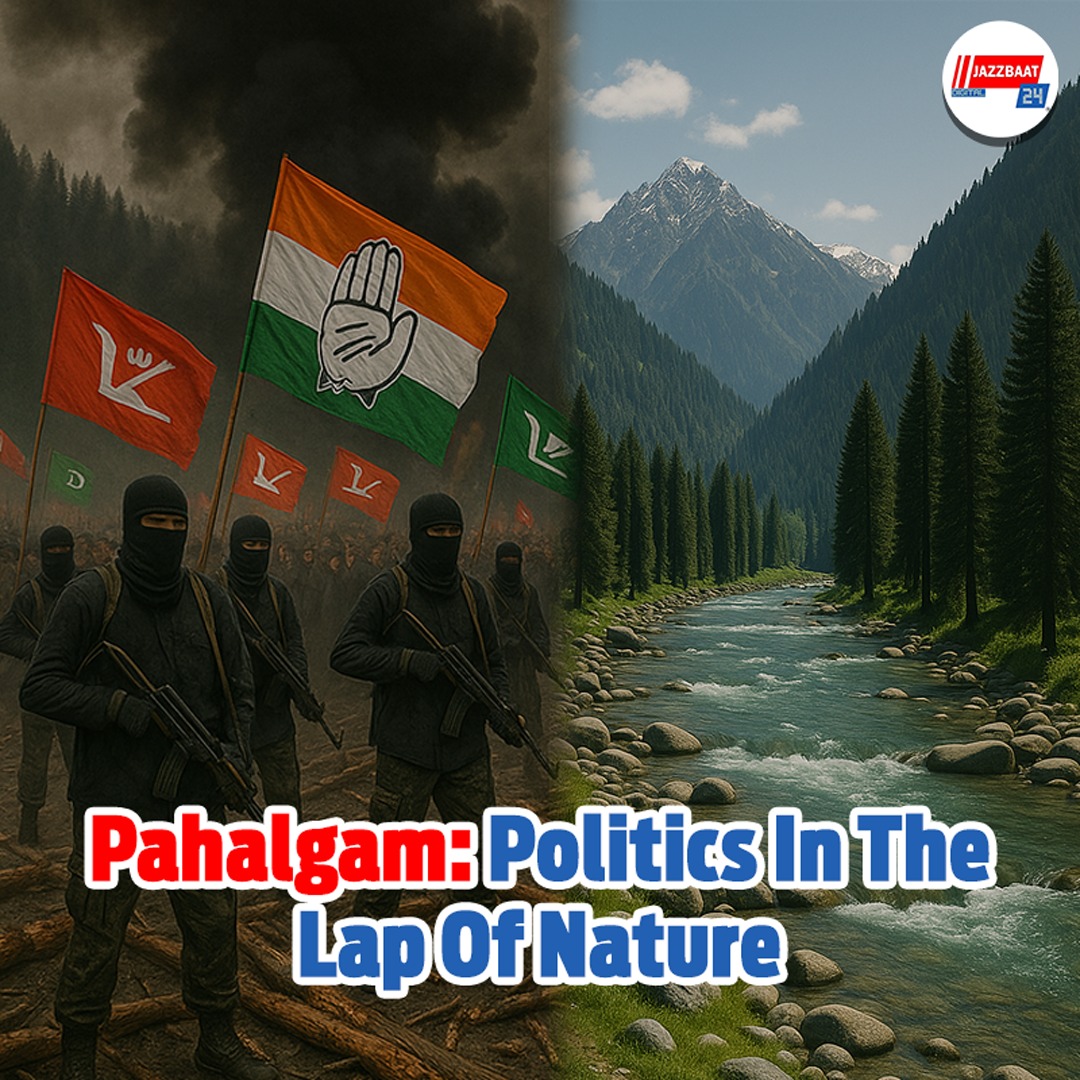
Pahalgam, a small town in the Kashmir Valley, is surrounded by nature—the name of which brings to mind the snow-capped peaks of the Himalayas, the murmur of the Lidar River, and a spiritual feeling in the lap of calm, silent nature. This town is known not only for its natural beauty, but also as an important starting point for the very holy Amarnath Yatra for Hindus. But in recent times, Pahalgam has become a strategic center of politics rather than nature.
The political landscape that the country's ruling party and the central leadership are currently creating around Pahalgam is no longer limited to mere tourism or security operations. Now Pahalgam has become a symbol of the 'New Kashmir' project, through which the central government is trying to portray that 'normalcy' has returned to Kashmir, people are living a peaceful life, and separatism is practically over.
In an attempt to portray this image, political leaders and ministers are traveling to Pahalgam, posing for cameras, promoting ‘national unity’ in traditional Kashmiri attire. Climbing the Pahalgam hills with the tricolor in hand, riding on horseback to convey a message of patriotism, and demonstrating ‘brotherhood’ with the locals has created an unintended political theatrical stage.
Seeing this scene, anyone can think that Pahalgam is now a ‘political Instagram spot’. But the reality is different. Those whose smiles are captured in the flash of the camera do not capture the local public life behind them. The sighing of unemployed youth, limited healthcare, poor condition of roads, mismanagement of tourism – these problems have remained unchanged.
In particular, local people have long been concerned about the safety of the Amarnath Yatra and environmental protection. The influx of several lakhs of pilgrims every year not only provides business opportunities for local residents, but also creates additional pressure on nature. But there is no sustainable strategy to maintain that balance. Now political tours and demonstrations have been added to it.
Not only the ruling party, but the opposition is also not far behind in this competition. On the one hand, they are criticizing the central government's 'festivalism', on the other hand, they are also going on similar tours, taking pictures of condolences in front of the camera. This pseudo-compassionate politics has actually turned Kashmir into a political contest.
And here the biggest question arises - is the public life of Kashmir now just a political symbol? Is Pahalgam just the backdrop where the central or state government highlights their own political will and philosophy? In fact, what is happening around Pahalgam is a kind of 'political branding'. Through this branding, it is being conveyed, "Look, Kashmir is now under our control, and unity, development and peace have returned here."
But it is clear that this 'image' does not match the reality at all. Even today, internet service is erratic in various parts of Kashmir, ordinary people are harassed in the name of army searches, political prisoners remain under house arrest for years. Meanwhile, when a leader lands in Pahalgam in a helicopter and takes pictures, it seems like nothing more than a script.
Pahalgam and other areas of the valley need real development—which will include the protection of local language and culture, employment opportunities, sustainable tourism policies, and political dialogue. On the one hand, the people of Pahalgam want livelihood security, on the other hand, they want recognition of their identity. If politicians really love Kashmir, they should look at these realities, not camera-dependent love.
Ultimately, Pahalgam is a combination of nature and culture. If it is turned into a place for a political photo shoot, the damage that will be done will not only be to the locals but also to our overall democratic spirit. Pahalgam should not become a political chess board, but rather a symbol of peaceful coexistence.